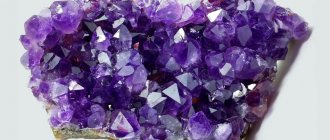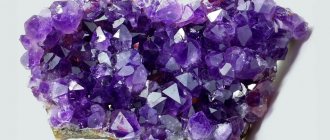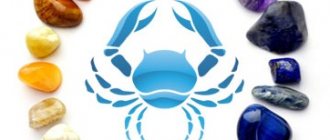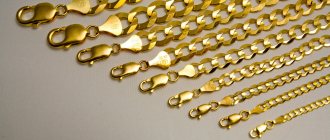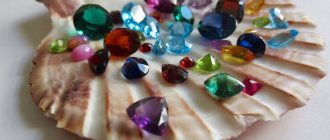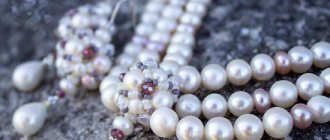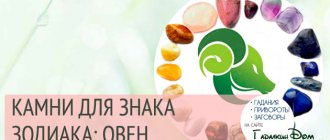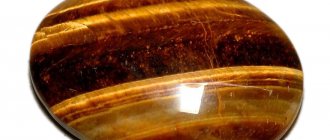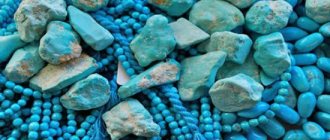Amethyst is not just a beautiful stone, it is believed that it has magical properties and can influence a person’s destiny. The gem symbolizes purity and chastity, enlightens thoughts, but at the same time can attract loneliness and despondency. Esotericists and lithotherapists see a direct connection between the effect of the mineral and how amethyst is worn and what it is combined with.
Is amethyst a precious or semi-precious stone?
The value of amethysts depends on the transparency of the crystals and their color. Jewelry made from noble types of this stone is more expensive, and the more intense the purple color, the higher the cost of amethyst.
Rich purple amethyst
Some types of amethyst are considered precious, but they are inferior in price to such minerals as diamond, ruby, emerald and other precious stones of the highest category. Amethysts, which are considered semi-precious stones, are also sold.
Interesting jewelry with amethyst
What does amethyst look like, what color is the stone?
The mineral called quartz has the following varieties:
- rock crystal is clear crystals
- amethyst - crystals of purple shades
- rauchtopaz - smoky or brownish crystals
- citrine - golden yellow and lemon yellow
- morion - painted black
- prazem - greenish quartz
- aventurine - yellowish or brownish-red shimmering quartz
This is what untreated amethyst looks like
Purple Amethyst: Jewelry
Purple amethyst looks great in a wide variety of jewelry. Earrings with this stone, especially in a beautiful metal frame, are a worthy decoration for any beauty.
Earrings with amethyst
Other jewelry with amethyst also looks great: bracelets, pendants, rings and jewelry sets.
Amethyst Jewelry
Assortment of jewelry
general characteristics
There are a large number of options for jewelry with amethyst. It is possible to give a natural crystal an arbitrary size and shape, and select the appropriate frame for the product. Particularly popular are:
- amethyst earrings;
- wedding rings;
- pendants;
- bracelets;
- wristwatch decorated with crystals.
The final cost of products with amethysts depends on several factors:
- origin of the gem. Products made from laboratory-grown stones will cost slightly less than natural crystals. At the same time, the price of amethysts from Brazil will be higher than their analogues from Russia;
- purity. The presence of defects reduces the final cost of a particular product, especially if irregularities and inclusions are clearly visible even to a layman;
- weight and size. As the weight and volume of stones increase, their cost naturally increases;
- cut. The most expensive method is “type A”. The cut option affects the shine, the play of reflections of light on the surface of the stone;
- frame For example, the price of high-quality gold will be higher than several inlaid crystals. If you need to purchase a large amethyst at a low price, it is better to take a closer look at silver jewelry. The stone combines wonderfully with various metals.
Gold items with an amethyst insert are priced at $70-$100. Silver prices are more affordable - for example, large earrings with amethysts can cost around $50.
Be sure to see: Luxury and magic of beryl jewelry
ladies jewelry
Jewelry with bright amethysts is well suited for women of any type of appearance. Products with this version of quartz are not strictly differentiated by age. However, you can select a stone based on the intensity of its shade: light ones - for young girls and a romantic look, dark ones - for a business style and adult women. The selection of the size of stones directly depends on the style of the future owner and the purchasing budget.
You should not combine gold and silver items in a single look, even if both of them include amethyst inserts.
Men's Accessories
Jewelry with amethyst is quite rare in men's collections. The stones are placed in a silver, or less often, gold frame. The main difference is the selection of dark crystals, which have a great depth of color. Such gems look courageous and stylish.
Amethyst is most often used for inlaying rings, voluminous bracelets and wristwatches. At the same time, the size of the stone for a particular man depends on the preferences and style of the owner.
Amethyst stone - matte Which zodiac sign is the amethyst stone suitable for: Amethyst is suitable to varying degrees for almost...
Published by Kamnegid.ru - Natural stones Monday, February 18, 2022
Amethyst stone: magical properties, who is suitable, zodiac sign
Perhaps magical properties began to be attributed to amethyst because this stone can change its color depending on the angle at which the sun's rays fall on it. There are many legends about amethyst; in particular, it is believed that it can arouse love in the person to whom it was given. This stone is most suitable for the following zodiac signs:
- Aquarius
- Fish
- Twins
- Cancers
- Virgo
- Sagittarius
- What zodiac signs is amethyst suitable for?
Style
The color palette of jewelry and various accessories should be in harmony with the chosen makeup, shade of nail polish, etc. For light purple amethysts, you should choose cool shades with an accent blue palette. If these stones have a dark and deep tone or are combined with other gems (pearl, agate, turquoise, peridot), you can choose warm and neutral shades.
Single amethysts look most harmonious in combination with light-colored clothes in a casual style. Beads or bracelets with many small crystals will perfectly complement a light summer look based on a colorful sundress or linen suit.
If the color scheme of a particular piece of jewelry complements the colors of clothing or accessories, the impression of a custom-made designer piece is created.
Which frame goes best with amethyst?
White goldYellow gold
Age type of appearance
The main rule of precious stones, which also applies to amethysts, is that the younger the owner is, the lighter and more modest in size the crystal in the decoration should be. Based on this principle, you should choose:
- light pink and violet stones for children and teenagers and girls. The ideal option would be a gem in a silver frame, which will refresh the look (small pendants, hairpins and combs for hair);
- dark lilac and purple stones are suitable for mature ladies. The stone will add some mystery and depth to the image of an adult woman. For jewelry, it is better to choose single crystals that look massive and self-sufficient.
Must See: Garnet Jewelry: Gold and Silver Garnet Jewelry
Amethyst.
We couldn’t talk about him briefly. After all, this stone is the best helper on the spiritual path. Name of mineral... Published by Magic Crystals Monday, February 2, 2015
Depending on the type, you can choose the appropriate jewelry with amethysts:
- a gem in yellow gold will harmonize with a summer-type girl (brunettes with dark eyes);
- amethyst in silver will complement the image of a woman of winter/spring types (blonde and light brown with blue/gray eyes);
- A stone in rose gold goes well with the appearance of a girl of the autumn subtype (dark brown hair with green eyes).
Note! Jewelry with a combination of several stones can be used by any type of appearance, the main thing is the integrity of the image.
Amethyst yellow: jewelry
Yellow or lemon colored quartz crystals are called citrines . And if you enter the query “yellow amethyst” into a search engine, most likely you will be shown jewelry with citrine. There is no yellow amethyst as such, because the very name of the stone “amethyst” implies that its color is purple. But it happens that the rich purple color of this stone fades in the sun and is lost. As a result, the stone acquires a yellowish tint.
Earrings with citrines, sapphires and diamonds
LiveInternetLiveInternet
Amethyst parure, England, 1830s. Pennisi (total 23 thousand euros) V. Renaissance and Baroque Characteristic features of the entire Renaissance influenced the fate of amethyst jewelry: 1) interest in the ancient heritage; b) development of the technical skills of artisans to a very high level. Renaissance jewelers and their customers paid close attention to the study of surviving antique cameos, collected them, and made copies. Of course, in the Roman heritage they were attracted not only by the shape of the products, but also by the material. Therefore, since the 16th century, a huge number of carved amethysts have appeared, which are very difficult for non-specialists to distinguish from ancient ones, especially since their authors often used ancient subjects, both copying real ancient gems and inventing their own subjects. Bust of Hercules in women's clothing. France, 16th century Hermitage
T.N. Maecenas. 16th century, Hermitage Intaglia, seated Satyr and goat, 16th century, Hermitage They were traditionally used in rings (then the frame can also look ancient), and in pendants. However, the luxurious frame, clearly made after Christ. - this is not ironclad proof that the cameo itself is also non-antique; there were quite often situations when antique cameos were inserted into medieval, Renaissance, Baroque and other frames. But here are examples of late cameos with late (in fact) frames.
Suspension. 1st half 17th century. V&AM
The Gatacre Jewel, 1550-60, V&AM Amethyst objects that have survived to this day are becoming increasingly varied in iconography, as well as larger in size, in part because the number of deposits being mined increases and the material becomes more abundant. Bust of a man, 16th century, Italy. Hermitage
In Renaissance treasuries you can now find more and more large carved objects like this tableware. As I understand it, this is also due to the fact that these large crystals of ornamental stone began to be imported as raw materials; apparently, being opaque, it was cheaper. Double cup. Second half of the 14th century - first half of the 15th century. Palazzo Pitti (Tesoro dei Granduchi)
The purple stone was set with extraordinary luxury: admire these 16th century vessels from the Louvre.
A fragment of the previous Baroque era gives amethyst jewelry more luxury and intricacy, polychrome; the noble “antique” beauty and monotony disappear. Commesso pendant with a female bust c. 1550-60. Royal collection
Curiosity Figure (Seed Man). OK. 1600. Italy. Walters Art Museum Finally, at exactly the same time as other precious and semi-precious stones, amethyst receives the invention of cutting. Which completely changes its fate (curiously, this will not happen with a pomegranate). Cross, 1680-1700, Portugal, V&AM VI. The Eighteenth Century: Classicism and Sentimentalism I skip the entire seventeenth century; it seems to belong to the previous Baroque era. In fact, very important processes took place there: jewelers learned how to cut stones properly, moving from simple cutting forms to complex ones, with the maximum number of edges. By the beginning of the 18th century, all discoveries in cutting, in principle, had been made. This did Amethyst a lot of good. Jeremiah Pozier. Bouquet for corsage. 1740s. Hermitage Museum. Unlike, say, emeralds, I haven't found much everyday jewelry with amethysts in the 18th century. They could be used for polychrome ensembles, as in the Pozier bouquet, but no one has yet seen any special charm in faceted amethysts. Jewelry such as the aigrette from the British Museum is still rare. Egret, 1726-1775, Italy, British museum For the 18th century (and part of the 19th century) there is however one very important exception: mourning jewelry. It is in jewelry that expresses grief for the deceased that faceted amethysts are found very often in this era. Most examples are English; I don’t know how true this was for other countries. Funeral brooch (or pendant?) in the form of an urn for ashes, c.1770-90, England. V&AM Pendant (open and closed) with a lock of hair from Prince Alfred (1780-1782), who died in infancy. Royal Collection Mourning Ring, c. 1775-1800. British Museum Funeral brooch with a lock of hair, inscription “JAS BATEMAN. ESQ OB 28. MAR 1758...” British Museum Mourning Ring, c. 1787, V&AM This tradition, fortunately out of fashion, was due to the fact that during the period of mourning clothing was very strictly regulated. It was practically impossible to wear jewelry, except for the darkest ones, such as black onyx. We need to see if onyx existed already in the 18th century. They write that permission to wear amethyst jewelry in mourning was due to the fact that its purple color was perceived as dark, as close as possible to black. In addition, since the craving for classicism continues, in the 2nd half. The craft of carved gems, including amethyst, was resurrected in the 18th century; During this period, tools become even better, then manufactories emerge, and the production of costume jewelry begins to flow. The subjects of these cameos, again, are often ancient, although there are also clearly modern ones. It is easier to distinguish them from ancient ones than from Renaissance ones - you can still see a certain mechanicalness of the work, too sharp edges (using new tools). Ring with the image of a trophy and cupid, 18th century, British Museum Ring with the image of Empress Catherine II, Russia, 2nd half of the 18th - early 19th century. State Historical Museum Cameo with the head of Minerva. Authors: James Tassie (?), William Tassie (?). British museum
Theseus, who defeated the Minotaur. Italy, 18th century. Hermitage
If the design is carved on faceted amethyst, this is a clear clue, of course, about a later century.
Bust of a philosopher. Carver Lambert. England, 18th century. Hermitage
For earlier things there is no point in writing such warnings, but when we are talking about items from the late 18th century, there is a possibility that one of us might actually get our hands on such items at some flea market or online auction. It must be remembered that experiments on imitation of carved cameos with glass pastes were undertaken by the Romans, and in the 18th century the production of glass “cameos” was already on a large scale. Finally, another large group of amethyst objects from the 18th century, it is also associated with the availability of raw materials (Siberian amethysts, in particular, appeared on the market). Snuff box in the form of a head in a turban, gray. 18th century. Smithsonian Particularly beautiful are these boxes (snuff boxes, mussel boxes, bonbonnieres) that play up the natural texture of the stone. Bluejohn (Derbyshire Spar) box. 1780 - 1820. Royal collection
Étui, Royal collection Royal collection (As in previous cases, it is impossible to say for sure: either the British dominated then in amethysts, or now in the digitization of collections). VII. Nineteenth century It was in this century that the cutting of amethysts and the shape of jewelry with them takes on the form we are familiar with (as well as with other stones). After all, the fashion for jewelry changes quite quickly, and this is one of the main reasons why so little jewelry from previous centuries has reached us: when they became old-fashioned, they were dismantled, and as technology developed, old “dull” stones with a small number of edges were remade into more beautiful ones. multifaceted: due to this, they lost in carats, but gained in beauty. To begin with, let's focus on historical jewelry, typical of the 19th century. Firstly, as long as the Empire era lasts, the genre of carved cameos remains relevant. Cameo with a profile portrait of King George IV, 1820-30. Royal collection "Resting Hercules". 19th century. Hermitage
Intaglio "Zeus" (?), 18th-19th century. Hermitage Seal pendants with the Oginsky coat of arms. 19th century. Hermitage Museum. Carver Dobrokhotov
At the same time, in the 19th century, amethyst cameos began to be used in more complex color ensembles: this is because monochrome and laconic classicism was replaced by historicism, which imitated medieval and other historical jewelry, where stones of different colors were boldly combined. Bracelet. OK. 1870, British Museum
Amethyst has been found in polychrome ensembles before, but there must be a reason for this. For example, in the case of this ring, I suspect because it is pseudo-Gothic (which is exactly what they loved in romanticism). Ring, 1807-38, Royal Collection. It belonged to Princess Theodora of Hohenlohe-Langenburg, daughter of the Duchess of Kent from her first marriage (i.e. half-sister of Queen Victoria). But the main trend in amethyst jewelry of the 19th century was still the use of a set of large stones of the same color in an ensemble, creating parures. The same thing happened with emeralds, sapphires, etc. Parure by Jean Baptiste Bonnard, ca. 1824 - 1829, Rijksmuseum
France, approx. 1830. Metropolitan Museum of Art At the same time, classic amethyst jewelry is so good that even now it will decorate any lady on the red carpet. Necklace, approx. 1820. V&AM
Earrings, ok. 1820. V&AM
France, approx. 1830. Metropolitan Museum of Art
Another feature of the situation: a very wide variety of shades. And a different price level. By this time, the market included not only Siberian amethysts (by the way, our Emperor Alexander I loved them very much and greatly popularized them in Europe), but also Brazilian ones. Att. Faberge. OK. 1909. Royal collection Triangle pendant with scrollwork. 19th century. Hermitage By Eugène Feuillâtre, ca. 1902, British Museum
Mary of Teck's cross, gift from Queen Victoria, 1877, Royal collection
Seal (handle made of topaz). Royal Collection
Renaissance Revival style necklace by Carlo Giuliano. 2nd half 19th century. Metropolitan Museum of Art Altar Cross. Master N.P. (Nikolai Danilov Poltavtsev). 1835. MMK
Subsequently, the Romanovs made an even greater contribution to the spread of amethysts by making gifts with them. Nowadays amethyst parures are in the personal collections of the royal houses of Great Britain, Denmark, Norway, Sweden, etc. As the imagination of jewelers develops, amethyst jewelry becomes more and more diverse. My personal favorite is pansies. Pendant, 19th century, Smithsonian British Museum, 1840s-1850s.
Amethyst is also used as an ornamental stone. Box, Russia, 1880s, Hermitage Earrings, ca. 1840-1851, France, V&AM
Elephant. Faberge. GIM Umbrella handle. Paris, approx. 1860, Sotheby's
In addition, amethysts were in great demand in royal houses, but I will talk about this separately later. VIII. Chinese amethysts And finally: just a gallery of such uses of amethyst, which are completely unusual for us. Chinese masterpieces. Washstand, Qing Empire, Qianlong period. Sotheby's
I haven’t found a normal description of this tradition, so just pictures from museums and auctions. Figurine of a woman with a boy. Royal Collection The technique of this carving is apparently called sanduo, and most examples of it, as far as I can see, date back to the Qing Empire. Table decoration in the form of magnolia flowers. China, Qing dynasty, 18th century, Hermitage I didn’t find a normal description of what exactly amethyst symbolizes for Chinese culture, but, obviously, something positive, otherwise it wouldn’t be used. But, of course, not like jade. Tobacco bottle (Chinese type of snuff box). 1750-1909 V&AM Amethyst was called water jade in Ancient China. The symbolism of amethyst in Chinese culture was primarily associated with its color. The color purple signified wealth and status. Especially during the era of the Han Empire. Amethyst was also used in Feng Shui. The Laotians believed that amethyst objects should be placed in places with the greatest concentration of chi energy in the house. This is all that we managed to pull out from the Chinese encyclopedia. Example of Qing Dynasty carving, Sotheby's
Squirrel and Melon Pendant, Qing Dynasty, Sotheby's
Example of Qing Dynasty carving, Sotheby's
Vase, Qing Dynasty, Sotheby's
Hanging, Cleveland Museum of Art
Example of Qing Dynasty carving, Sotheby's
Perfume bottle, Royal Collection
Tobacco bottle (Chinese type of snuff box). 1800-95 V&AM LACMA Tobacco bubble. Metropolitan
Likewise
Vase, Metropolitan
Vase in the shape of a gourd. Hermitage Vessel with lid. Hermitage
Bottle for dry perfume with a stopper. China. Hermitage
That's all about amethysts for now. Someday I’ll gather my strength and put on a topic about royal jewelry and its transformation over time.
Black Amethyst: Jewelry
Black quartz crystals are called morion . For jewelers, this stone is of little interest and you can find jewelry made from Morion on pages with handmade jewelry. These products are credited with magical properties and even warned that they should not be worn. But among professionals, morion is not very popular and is considered a low-grade mineral.
Morion crystals
Amethyst pink: jewelry
Jewelry made from rose quartz is suitable for gentle, romantic girls.
Earrings with rose quartz
Rose quartz in rings, bracelets and beads looks no less delightful.
Rose quartz pendants, beads and bracelets
Amethyst - mystic
Almost any precious, semi-precious, and even non-precious stones have magical and mystical properties. If you look at the shimmering edges of precious stones for a long time, you can plunge into a state of trance and peace. Amethyst also has these features. This stone does not carry any bad energy. Queens and first ladies wore it with pleasure.
The magic of stones is in their beauty and shimmer
Which finger to wear amethyst jewelry on?
It is better to wear a semi-precious gem on the ring finger of any hand. Men are recommended to wear the ring on their right hand, and women - on their left. Wearing a ring on the middle finger reduces a person's vitality. Amethyst can decorate the little finger of any hand. On this finger he reveals all his magic and includes protection from unpleasant situations. As for the remaining fingers, the stone is not worn on them, since it will not be able to reveal all its properties.
Is it true that amethyst is a stone of loneliness, a widow's stone?
Amethyst is believed to help preserve love even when a loved one has died. Therefore, widows or widowers wore amethyst in order not to succumb to new temptations and to remain faithful to the deceased person. For those who have not lost their loved ones, amethyst cannot cause harm or contribute to the departure of a loved one. The only caveat to wearing amethyst jewelry may be that the purple color causes anxiety and melancholy in some people and such people should not buy it. Those girls who like amethyst jewelry can wear them without fear of negative consequences.
Amethyst can evoke feelings of joy or melancholy
Magical properties of jewelry
The mystical properties of the amethyst stone and who the gem is suitable for were first indicated on the Sumerian tablets - this stone was a symbol of love and strong attraction. That is why such a crystal was forbidden to be accepted as a gift from strangers.
In ancient times, amethysts helped travelers - the stones changed their color during an imminent storm and strong changes in weather.
The stone should be worn by down-to-earth people who strive for spiritual development with all their might. Amethyst is most harmonious for the signs of the Air element - Libra, Gemini and Aquarius. However, such jewelry should not be worn by Leos and Capricorns, since the stone will conflict with their internal energy. Aries can periodically wear amethyst jewelry if they feel an excess of emotions and high aggressiveness.
Amethysts have a high sensitivity to Yin energy, due to which they are characterized by a positive effect on the Ajna chakra. With prolonged examination of such stones, nervous tension decreases, peace and inner peace come.
Crystals in jewelry with lunar and solar shapes are strong amulets against witchcraft and black magic.
Natural amethyst is able to develop the internal capabilities and inclinations of a person, and open the door to the other world. Regularly wearing jewelry with such a gem helps to get rid of bad habits and strong addictions. Amethyst helps control evil intentions, trains willpower, and protects from the anger of other people (especially bosses and persons with higher status). For an amethyst to truly reveal its potential for magical properties, jewelry with it must be worn constantly.
Note! Any jewelry with amethyst should be periodically cleansed of negative energy - left overnight in salt or sea water.
Why does amethyst change color?
Amethyst changes its color depending on the lighting. Under artificial light, its colors fade, but under sunlight it becomes brighter. In addition, it can change shade depending on the ambient temperature. In sunlight, its purple color gradually fades, which has given rise to many legends about the ability of amethyst to predict the future.
Amethyst deposits
Siberian Amethyst: Jewelry
Amethysts mined in Russia range in color from pale lilac to purple. The price for such amethysts is market price and differs little from the price on world markets for precious stones. It is difficult to distinguish such amethysts in jewelry from those coming from foreign markets. In addition, today the production of artificially grown amethysts has been established, so the price of this stone is not very high compared to the price of other precious stones.
Amethyst Jewelry
Caring for your jewelry
Natural amethyst has medium hardness (up to 7 on the Mohs scale). This necessitates careful care and storage of the gem. Among the basic rules of circulation are the following:
- Crystals discolor quickly enough when exposed to ordinary water and sun. For this reason, jewelry with amethysts should not be worn on the beach or before going to the pool or sauna. At the same time, short-term exposure to water does not affect the condition of the stones - for example, with an amethyst ring, you can safely wash your hands.
- The stone can be scratched quite easily by hard objects. Also avoid contact of jewelry with aggressive acids and alkalis, household chemicals, cosmetics and perfumes.
- You can thoroughly clean the stones using a soft brush and soapy water. To begin, soak the product in the foam solution for a few minutes, then gently brush and rinse.
If the amethyst is not inserted into the frame, but glued, any water procedures and contact of the stone with a humid environment should be excluded. This type of jewelry should be cleaned with a soft cloth, wiping the crystal with gentle circular movements.
Amethyst stone: how to wear?
You can wear jewelry with amethyst on weekdays and on holidays. It is suitable for both formal and business wear. If you decide to wear jewelry with amethyst, then do your makeup using cool-toned cosmetics. Bright, hot-colored cosmetics do not go well with this mineral.
The same can be said about the color of the manicure. As for the shade of clothing, light, plain suits or dresses are more suitable; you can think about an outfit to match the jewelry. If you wear a bright floral dress and jewelry with an amethyst, then the jewelry will simply get lost against the background of such an outfit.
Lavender earrings to match the dress
Who is amethyst suitable for and how to wear it
Frame
The majority of the cost of amestist jewelry is the setting. The mineral can be framed in gold of different shades, gold-plated alloys, silver, titanium, etc.
The shape can be absolutely any – from laconic broken lines to fancy petals and metal curls. One of the popular options is the theme of floristry - creating rings and pendants in the form of flowers with a gem core.
Note! When choosing a gold frame, be sure to consider the shade of the crystal itself - not all colors of amethyst will harmonize equally well with yellow or red gold.
Amethyst: what does it mean for men and women according to the horoscope of all zodiac signs?
Is amethyst equally suitable for people of different temperaments? The nature of this stone is cold and it may not suit everyone.
- The nature of Aquarius is flighty and creative, amethyst will add inspiration to women of this sign
- For Pisces , amethyst is the stone of their element - water, so it will help to reveal all their natural talents
- Aries women in terms of temperament. He is too cold for Aries women with their “hot blood”
- Stubborn Taurus will come into conflict between the calm, cold energy of amethyst and their unbridled nature. But perhaps this stone will somewhat balance these two elements
- Gemini women can wear amethyst without restrictions. For them it is neutral
- Cancer women are somewhat slow and pragmatic; for them, amethyst is ideal from the point of view of inexpensive and bright decoration
- For Leo , amethyst is too calm a stone. They need brighter jewelry or costume jewelry
- Neat and meticulous Virgo can wear amethyst jewelry without restrictions. For them, this stone gives positive energy
- Libra women may doubt whether they should buy this stone at all. They succumb to superstitions and if there is doubt, it is better to refuse amethyst
- Scorpio women , who are harsh and hot-tempered by nature, may not accept the calmness of this stone.
- Sagittarius women will love this stone and will wear it with pleasure. They are on the same wavelength with amethyst
- Capricorn women need a brighter stone or amethyst of a rich purple color. This way they can get additional energy from the mineral.
Even an ordinary pebble found on the seashore can provide positive energy. Amethyst also gives positive energy
